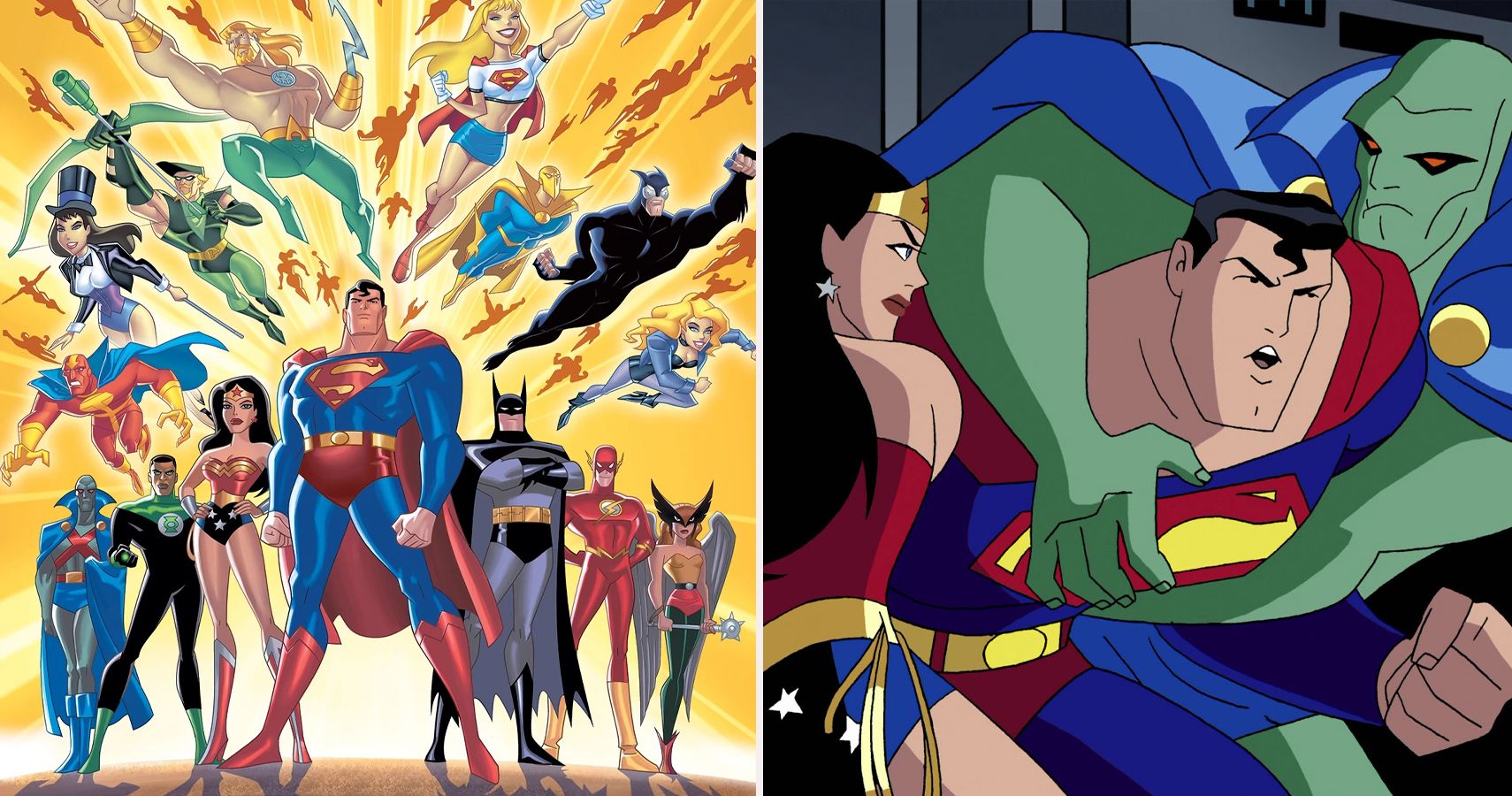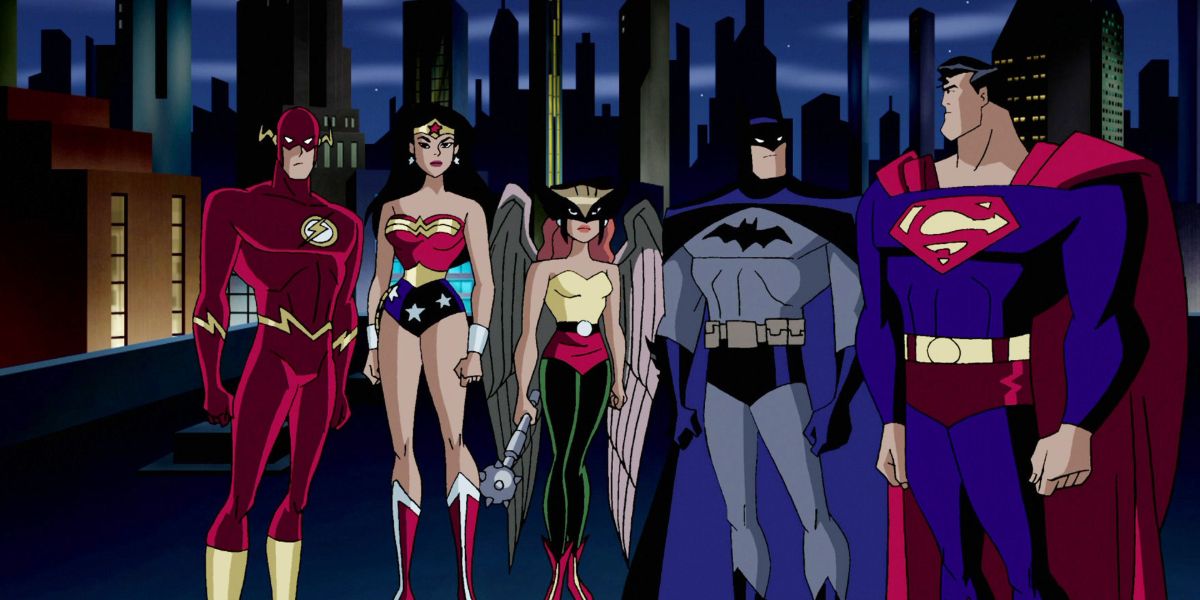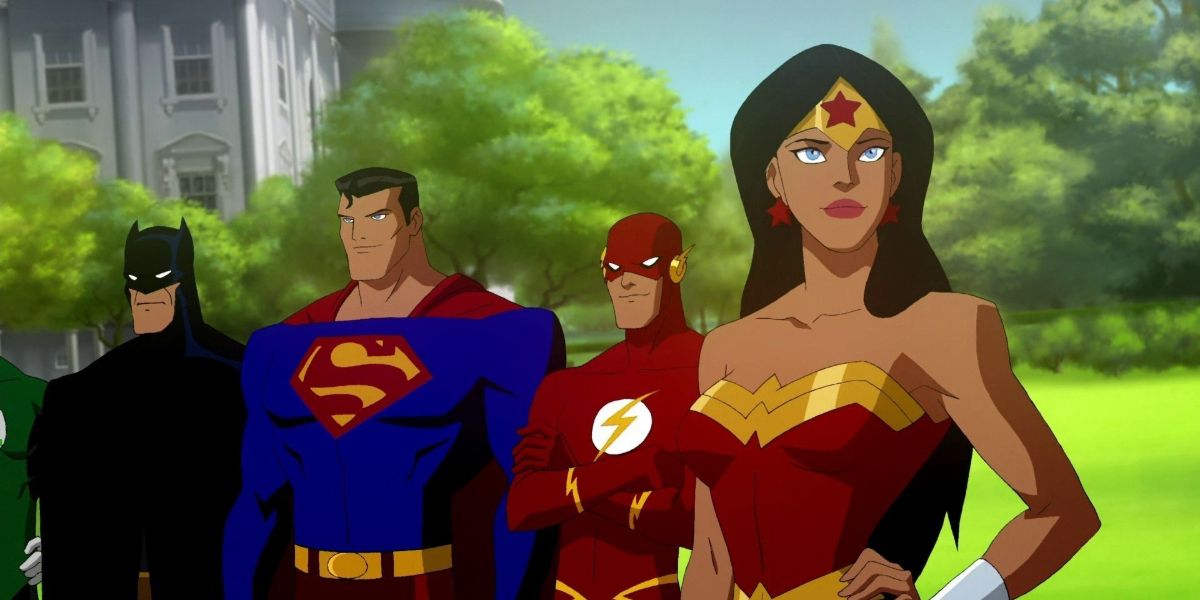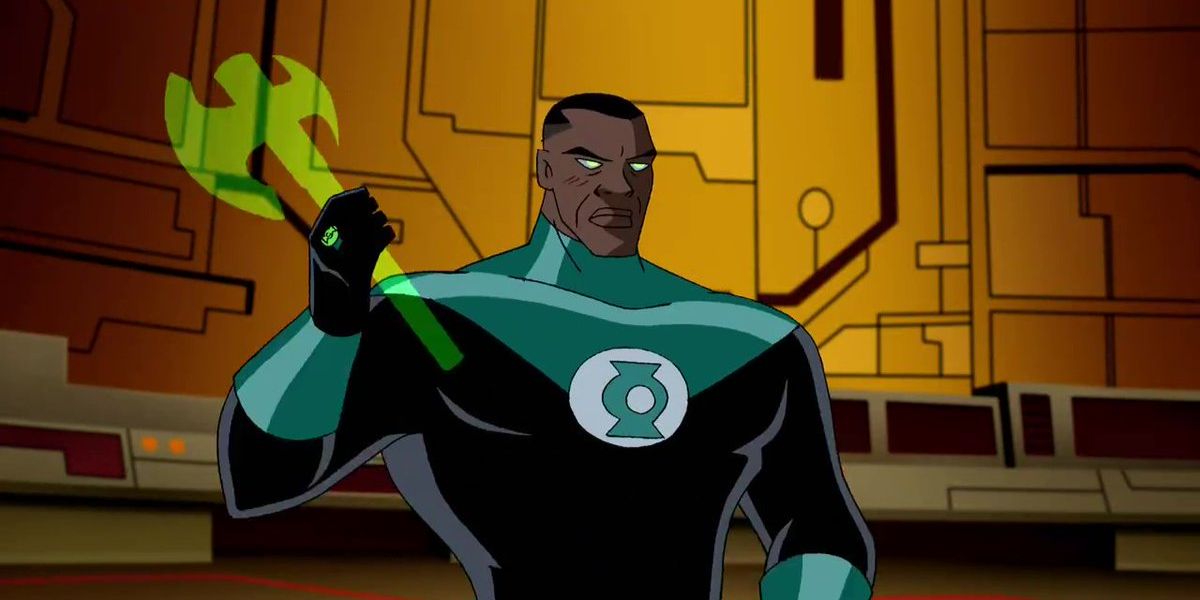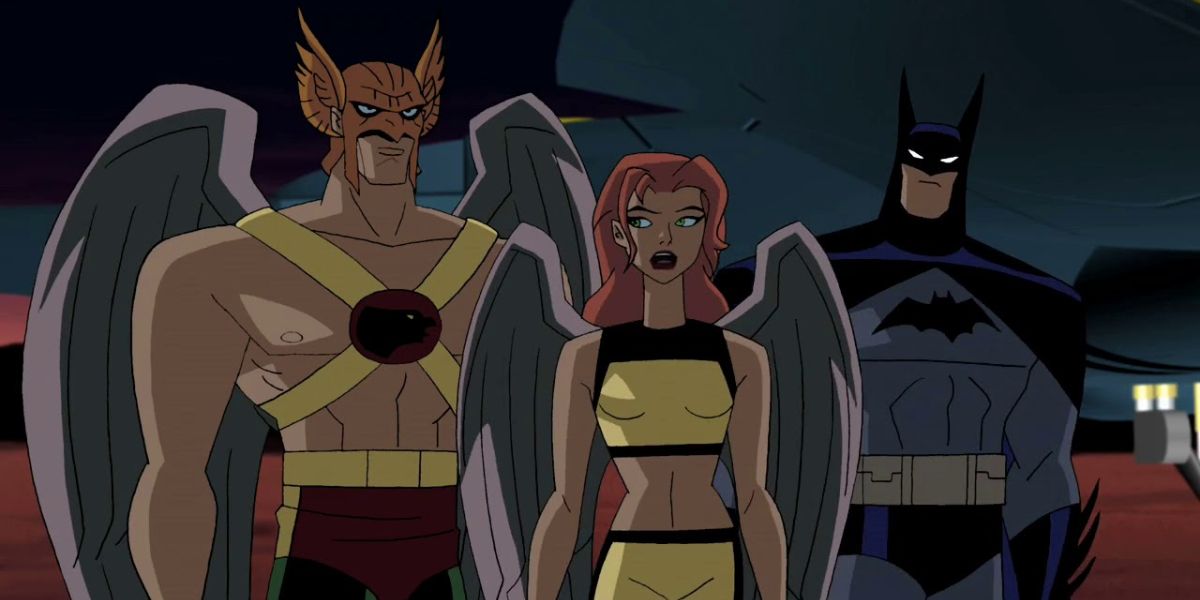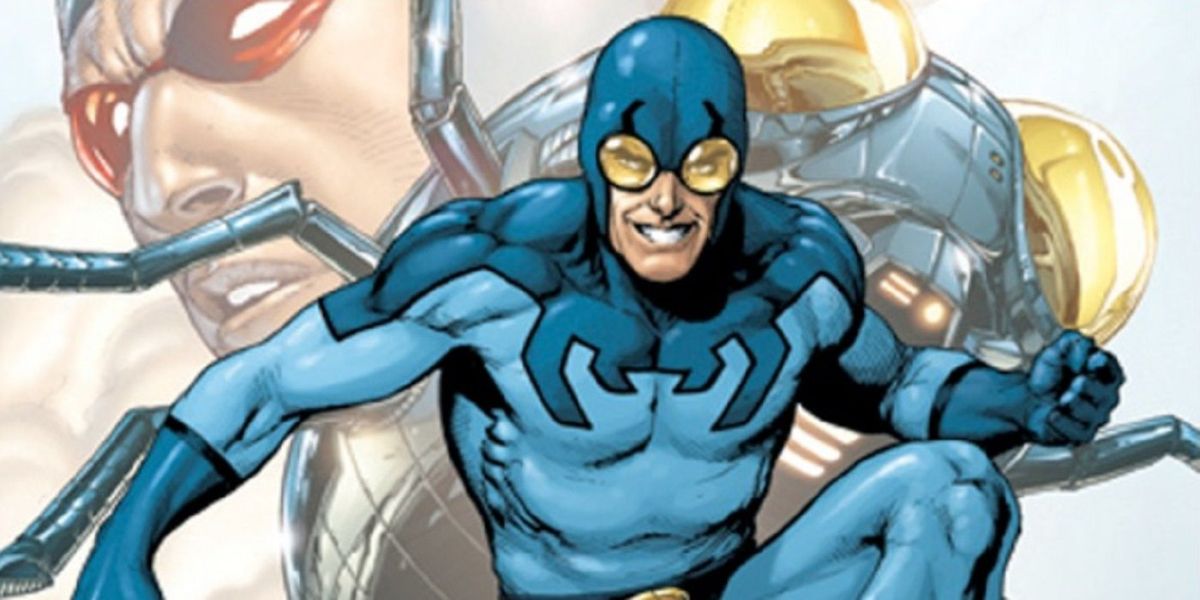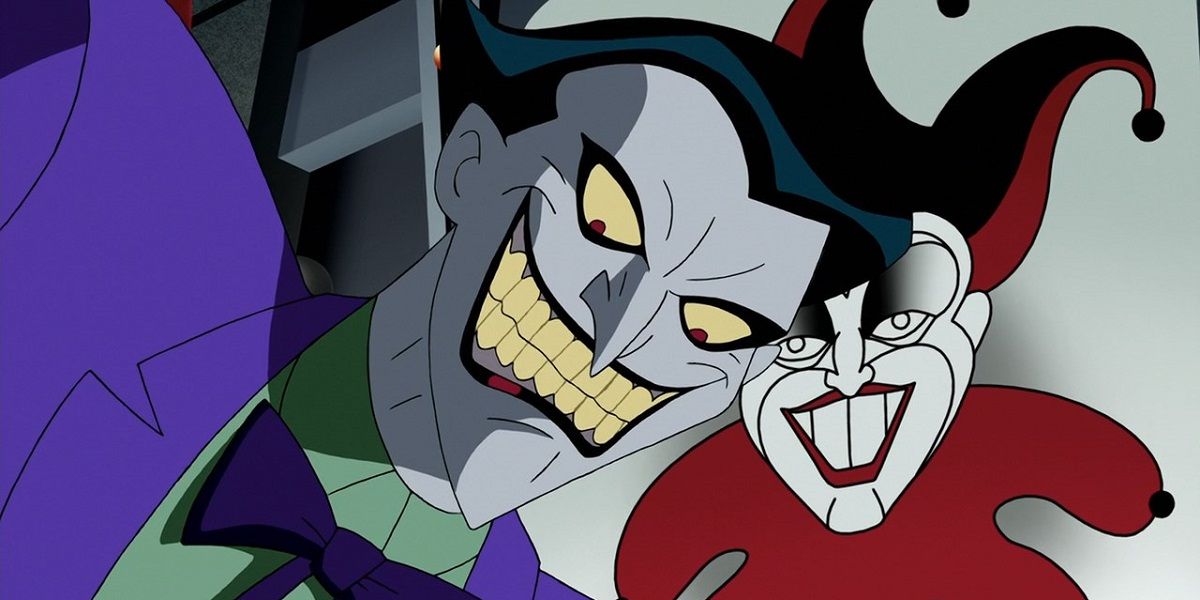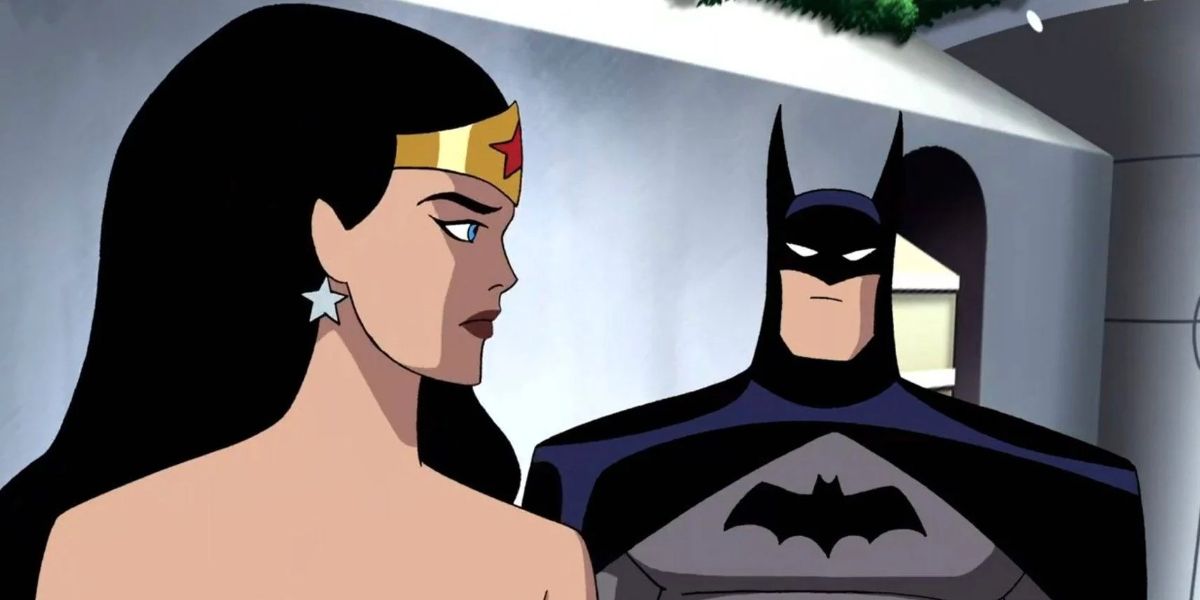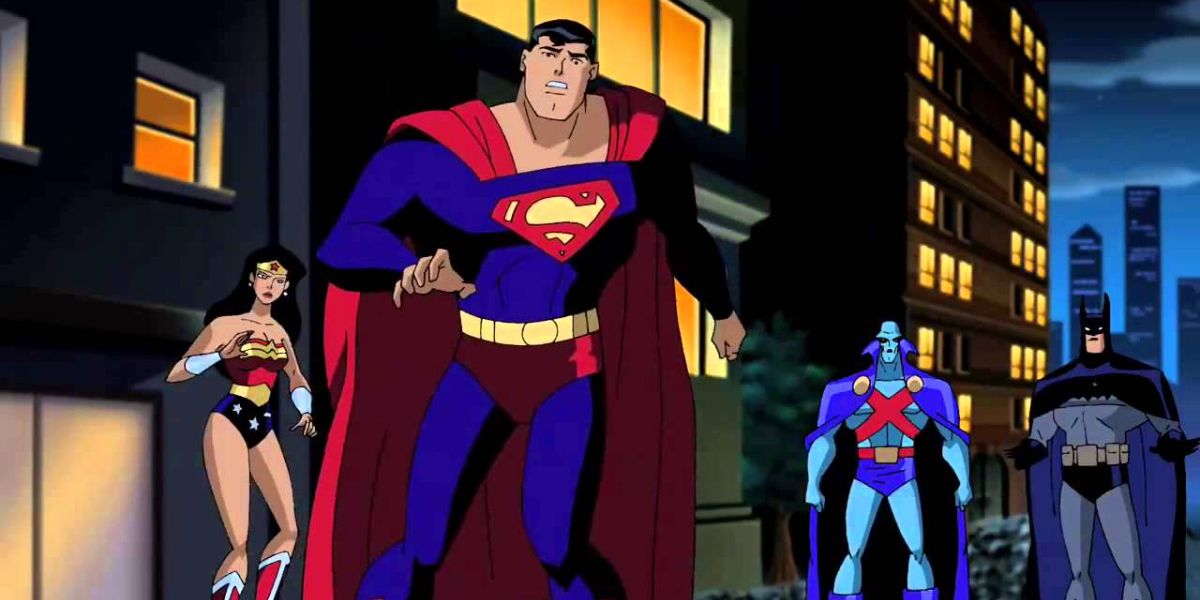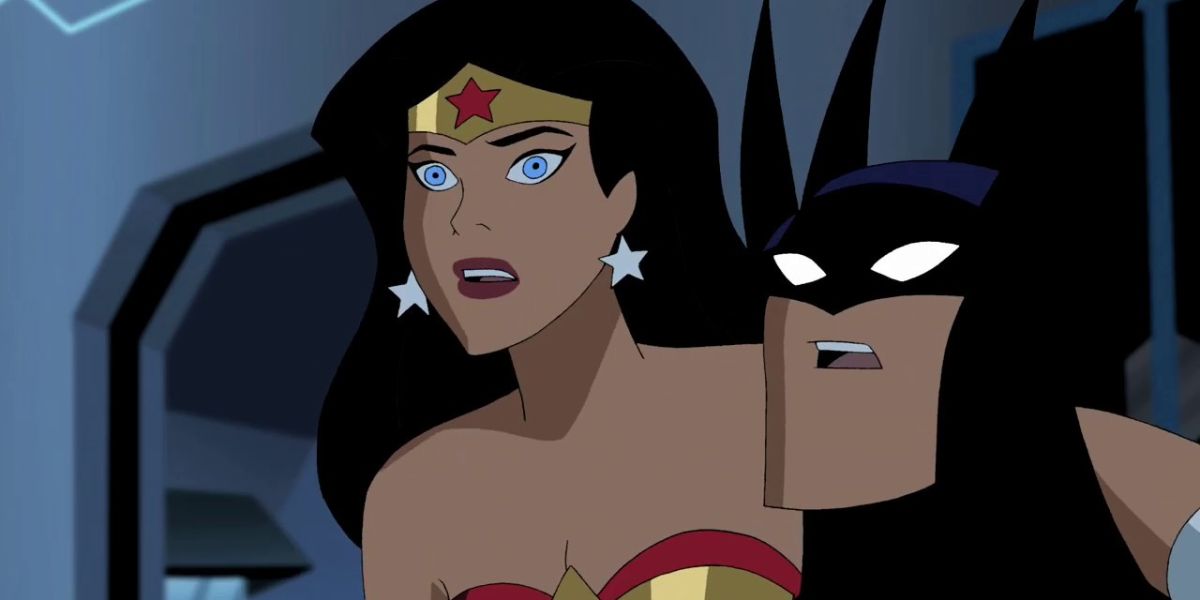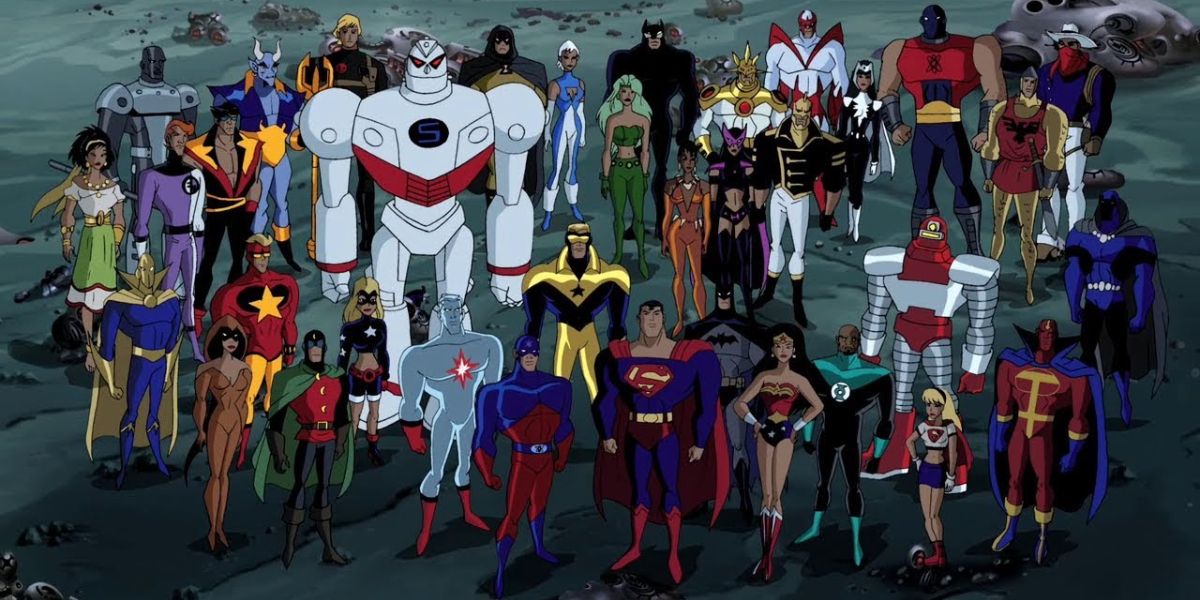Back in the '90s, Bruce Timm arrived at the top of animated television by co-producing the legendary Batman: The Animated Series. That show sparked a new era of DC superheroes in the small screen and one of its peaks was with the 2001 new animated version of the Justice League, also developed by Timm. The Cartoon Network series would be a fan favorite.
Now, with the announcement of the elusive Snyder cut release, a new version of his Justice League movie, it's a good time to remember the show that is, arguably, the best depiction of the superhero team in a moving picture format. Whether someone is a fan or simply remembers the show from when they were kids, here are 10 facts you might not know.
Season 2 Was Supposed To Be the End
The last episode from season 2, "Starcrossed," was supposed to be the big finale of the whole series. As told by Bruce Timm in the DVD audio commentary, the team of animators was ready to leave the series when Cartoon Network approached them and proposed a new follow-up series.
That new series would be Justice League Unlimited, which ran longer than the original. It's worth noting this also happened in Unlimited, as Timm's team was ready to work on the epilogue for the whole series in the second season of that show; however, the channel, again, informed them they still had one more season to go.
The Movie Crisis On Two Earths Was Supposed To Be In Continuity
Justice League and Unlimited are different productions with the same soul. In the latter, the TV show had expanded, adding new storylines and characters, and revamping some of the old characters that appeared in the first series. To ease the transition between the two series, a direct-to-video movie was planned to be released.
Unfortunately, the production of the film wasn't greenlit. The show went on without the movie, but years later, for the new Justice League: Crisis On Two Earths, the same plot was used. They just removed any references to the show and the skeleton of the script was already available.
John Stewart, The Green Lantern
At the time, it was unusual to see the Green Lantern position filled by John Stweart since, at the time, the main Green Lantern in the titular comic was Kyle Rayner. It made it more unusual since the other more popular Green Lantern, Hal Jordan, was not used.
However, Stewart was a great addition to the group. His abrasive personality infuses the series with dramatic potential, and he also added a bit more diversity to the team. This addition marked a resurgence for Stewart in the comics, as many fans had forgotten about him.
The Justice League Bible
Much of the arcs that are presented in the show during its run were planned in advance. Bruce Timm and his team developed a backstory bible for all the characters they were going to used, even before the series started to be animated.
Within this bible, many relationships were set from the beginning, like the romantic one between Batman and Wonder Woman (a rejection of fan-favorite couple of Superman and Wonder Woman), and the betrayal plot involving Hawkgirl.
Right Issues
DC Productions, outside of the brand's comics, have been known to be embroiled in a confusing legal labyrinth. This the probable reason why many fan-favorite characters do not appear in the CW shows. Justice League was not immune to this either and had problems securing characters.
One of the biggest examples was Wonder Woman. If it wasn't for the push of executive producers to have the Big Three (Superman, Batman, and Wonder Woman), the Amazonian would not have been part of the show. Other examples include the absence of several Batman villains, used in the new show The Batman, and the non-appearance of superheroes like Blue Beatle and Firestorm.
Celebrity Voices
Justice League, as well as Justice League: Unlimited, had their fair share of celebrity and known personalities as cameos and even cast members. Probably the most known, mainly because of his involvement in Batman: The Animated Series, was Mark Hamill reprising his role as Joker.
Another notable member of the cast was Michael Rosenbaum, who voiced the Flash. Rosenbaum is mostly known for playing Lex Luthor in the hit DC TV show Smallville. Other actors the appeared on the show were Keith David, Hector Elizondo, Neil Patrick Harris, Alfred Molina, Ron Pearlman, Tom Sizemore, and Rob Zombie.
A More Adult Tone
The show marked an evolution in children programing by having more mature themes than DC animation predecessors. Bruce Timm said how much leeway he had in the writing of the show from Cartoon Network, more so than he had with WB or Fox when producing Batman: The Animated Show.
Producers were able to get away with more violence in action scenes, mature romantic relationships between their adult characters, and even had hints of sexual humor in the dialogue.
Superman Was A Wimp
During the show run, fans pointed out on the internet a repeating gag that was getting on their nerves. Many had the perception that Superman's powers within the show were toned down, and in most episodes, the Man of Steel was getting taken out pretty quickly in action scenes.
The showrunners took notice of this and accepted that Superman "was a wimp" in several episodes. This is attributed to the necessity of taking him out of a plot that didn't concern him, because of his great power and potential ability to resolve any conflict more quickly.
Its "Realistic Style" Was A Mistake
Something that separated the Justice League series form some of its predecessors, especially the '70s show based on the comics Super Friends, was its implementation of a realistic visual style. Wanting to ground the show in a verisimilar reality, producers opted to focus on narrative and let the visual fall back.
Bruce Timm has recognized this as a mistake and as the show progressed so did the visual component, letting animators take more risk in later episodes of the show and its sequel Unlimited.
Epic Storylines
Once the show evolved into its Unlimited version, the showrunners had so many characters from the DC universe at their disposal, more than they ever had, that it allowed them to increase the drama and plot scale, and especially in terms of action.
Because of this, Justice League is characterized by its lengthy storylines that were made into several episodes, from two to even three parts. They were also able to tell stories without having to show every main character, leaving one or two of them out for certain episodes.

